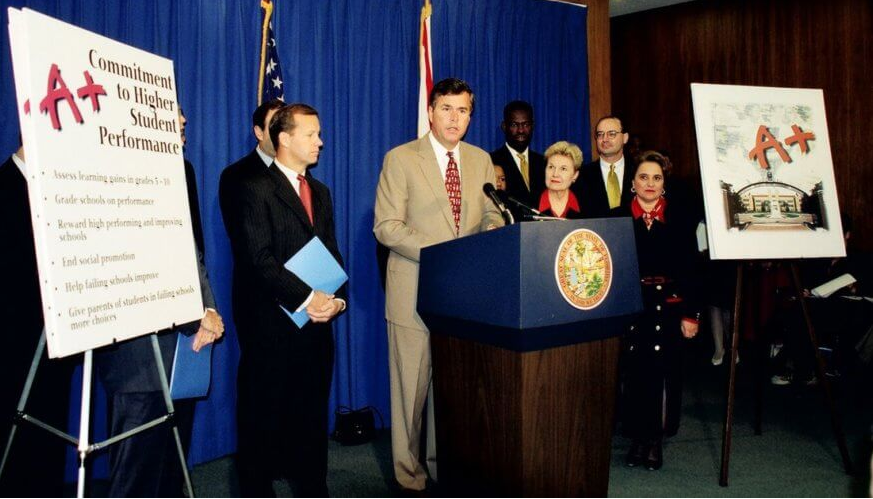
In 1991, the Florida Legislature passed, and Gov. Lawton Chiles signed, Blueprint 2000: The Education Reform and Accountability Act. The purpose of Blueprint 2000 was to restructure how Florida’s public education system was managed.
In the late 1980s, Florida was a national leader in experimenting with teacher empowerment and site-based decision making (SBDM). The SBDM movement sought to transfer more decision-making power to schools in exchange for these schools being held more accountable for results. Blueprint 2000 was designed to create a state policy infrastructure that would institutionalize SBDM across all of Florida’s public schools.
Legislative and executive branch leaders, all of whom were Democrats, thought Florida’s public schools were underperforming because they were being micromanaged. Blueprint 2000 was going to change that.
I was one of four teacher union representatives on the state commission appointed in 1991 to develop the Blueprint 2000 implementation plan. In collaboration with the Florida Department of Education and thousands of educators, parents, business leaders, and other citizens, we created new state curriculum standards, a new state assessment system called the Florida Comprehensive Assessment Test (FCAT), established School Advisory Councils (SACs) at every public school, and required schools to implement annual School Improvement Plans (SIPs). We failed to reach consensus on how best to hold public schools accountable for results, a failure Jeb Bush fixed when he became governor in 1998.
Next spring will be Blueprint 2000’s 30-year anniversary. Florida’s public education system has made great improvements using the education reform and accountability infrastructure that sprang from Blueprint 2000. But that infrastructure has aged. Florida’s public education system needs a new blueprint. It is time for Blueprint 2030.
The COVID-19 pandemic is forcing educators and parents to innovate at a pace never before seen in public education. In the period of a month last spring, every district, private, and charter school campus closed and every student became a homeschool student. When school begins this fall, families will choose from a variety of instructional models, including on-campus, virtual, hybrid (i.e., a combination of on-campus and virtual) and homeschooling. In coming years, families will have access to even more choices.
State government has waived a variety of state laws and regulations to allow schools and families to adjust to this new normal. But these waivers are temporary solutions. Our state leaders need to start developing a new public education infrastructure, and Blueprint 2000 provides an approach they could consider emulating.
Similar to what the Florida Legislature did in 1991, the 2021 legislature could pass legislation establishing a commission to develop recommendations for creating a new public education infrastructure. This new infrastructure should be designed to support a more diverse and flexible public education system, one capable of meeting the unique needs of each student.
The largest task for this commission would be improving Florida’s antiquated public education funding system. This funding system is hostile to systemic innovation and the flexibility needed to meet each student’s needs.
The state has created flexible spending accounts for some students with unique abilities/special needs. About 16,000 families will use this spending flexibility this fall to customize their child’s education. Providing all families with access to flexible public education funds is necessary if all children are to benefit from a customized education program.
We also need to reinvent our state assessment and assessment data systems. As students increasingly receive publicly-funded instruction from multiple providers (tutors, virtual school, college via dual enrollment and assigned neighborhood school) we will need to assess the progress students are making with each provider, aggregate their achievement data, and properly share students’ data with those providers.
We also will need to institutionalize better processes for helping families and students pick the most appropriate providers. Well over 10,000 providers are eligible to serve the 16,000 unique abilities/special needs students using flexible spending accounts, often called Education Scholarship Accounts (ESAs). Deciding which of these 10,000 providers is the best fit for a specific learning need is a daunting task.
A Blueprint 2030 commission will have a huge job helping state government, school districts, schools and other education providers create the infrastructure necessary to support an effective and efficient post-pandemic public education system. We are never going back to the pre-pandemic education system.
Planning for the future should begin soon.


